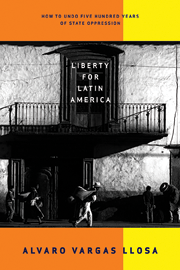SAO PAULO—Brazil is routinely mentioned, together with China and India, as an emerging giant. Brazilians agree. As a liberal democracy, the country has a political edge over China; as a cultural mosaic, it is more integrated than India. But does Brazil’s socioeconomic model guarantee this mesmerizing nation’s passage to adulthood?
In the first decade of the 21st century, Brazil reaped the rewards of the market reforms of the 1990s. About 30 million people joined the middle class. Few facts tell this story more poignantly than the melting away of the once mighty Movement of Landless People, whose strong tactics scared vast swaths of the hinterland. A decade ago, there were 285 squatter sites controlled by this group. There are barely 30 or so now. Luciano de Lima, the coordinator for Sao Paulo state, recently had trouble enlisting 27 people to invade a plot of land held by the Ferroban railway company. The organizers admit that job creation, particularly in construction, and to a much lesser extent the Bolsa Familia program, which provides cash transfers to the poor, have taken the oxygen out of the movement.
Consumption growth reinforces the notion that the middle class is on a roll—in a country whose economy mostly relies on the internal market. Retail and real estate companies, and even providers of services such as education, are booming.
However, the government of former President Luiz Inacio Lula da Silva, who deserves part of the credit for these developments, failed to streamline a labyrinthine political system riddled with cronyism whose federal, state and local structures overlap. And he succumbed to the superstition that economic power comes from the top-down promotion of industrial champions. As Mansueto Almeida shows in his book “The New Developmentalist State and the Lula Government,” billions of dollars were channeled to certain producers of meat, cellulose, iron ore, oil, etc. The Brazilian Development Bank (BNDES) was the main instrument. It even funded international acquisitions. Meat producers JBS and Marfrig received abundant help.
Inevitably, the model produced mediocre results and corruption. The Caixa Economica Federal, another mammoth financial instrument of the state, bought or subsidized banks and construction companies. Beneficiaries such as Banco Panamericano ended up involved in fraud cases. Others, such as Frigorifico Independencia, where BNDES “invested,” became insolvent. The jury is still out on what the increase of the government’s stake in the oil monopoly Petrobras will bring.
The result has been threefold. First, a colossal fiscal bill. The new president, Dilma Rousseff, has announced $50 billion in cuts (ironically, in order to boost her electoral chances last year, Lula raised discretionary transfers to state and local governments by 51 percent). Second, old-economy commodity industries have dwarfed services. Third, since the government dictated the nature of economic expansion, companies neglected to invest in research and development. According to the World Organization of Intellectual Property, Brazilian applications for patents fell by 20 percent last year compared to a 50 percent increase in China and 20 percent in South Korea.
The focus on industrial champions meant that Brazil failed to redress the disconnect between academic research centers and the productive economy. While Brazil is one of the world’s top 11 scientific producers—2.4 percent of the articles published in scientific magazines are written by Brazilians—it is far behind in production of technology. There are only 23 engineers for every 10,000 people; the number in Israel is three times larger.
In the 1990s, the government consumed one-quarter of the national wealth. Today it consumes 40 percent. A young businesswoman who imports toys from China told me the same thing I heard from executives in major companies: “I spend my time struggling with a mountain of taxes and regulations. It is a miracle I am able to do anything at all.”
There are some signs that Rousseff understands this. She is now preparing the second version of the national economic plan—the Productive Development Policy. The first version spawned the system described above. The president says she wants more fiscal discipline, less industrial champions and more innovation and services in the private economy. Will she accept that, in order to achieve this, her government will need to retreat from the turfs her predecessor invaded this past decade? Will her party, a mix of center-leftists and radicals, let her? Will Lula, who commands semi-divine status here, acquiesce?
If the answers are no, Brazil’s accession to the first world will not happen very soon.












